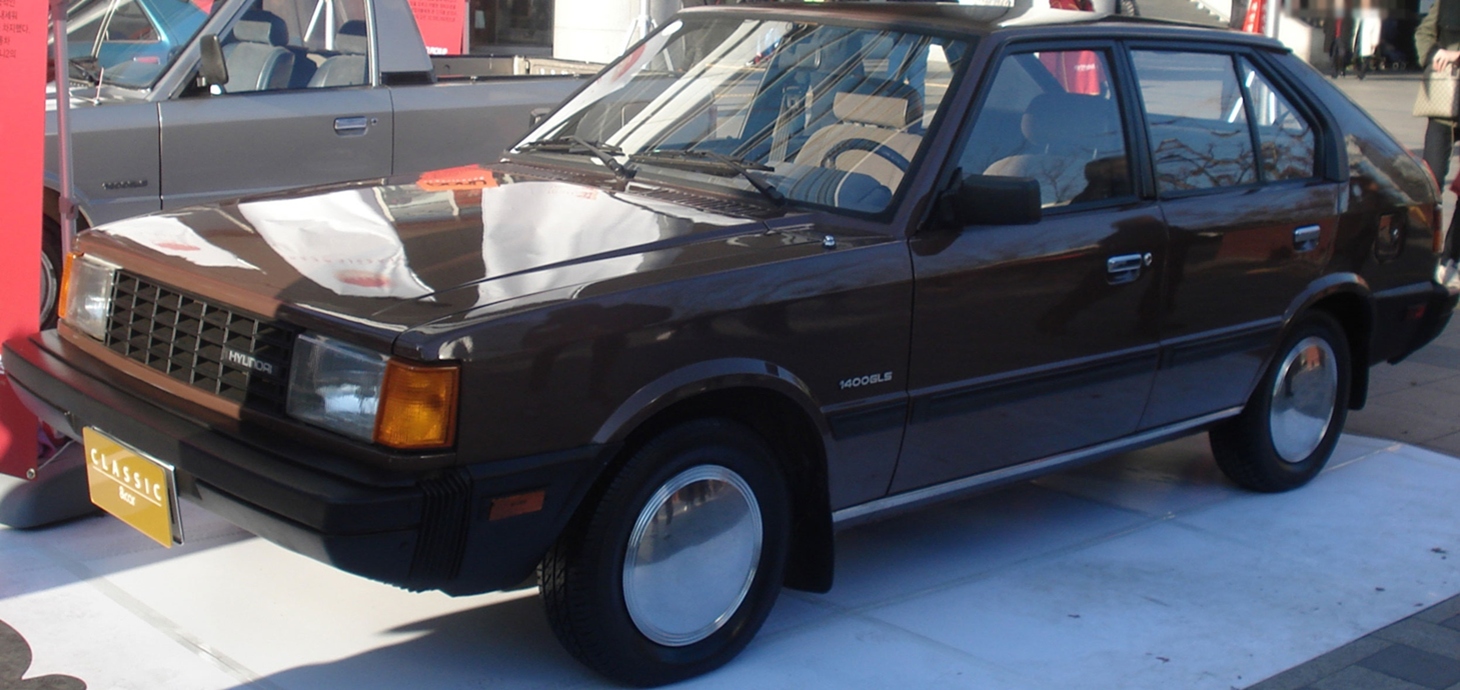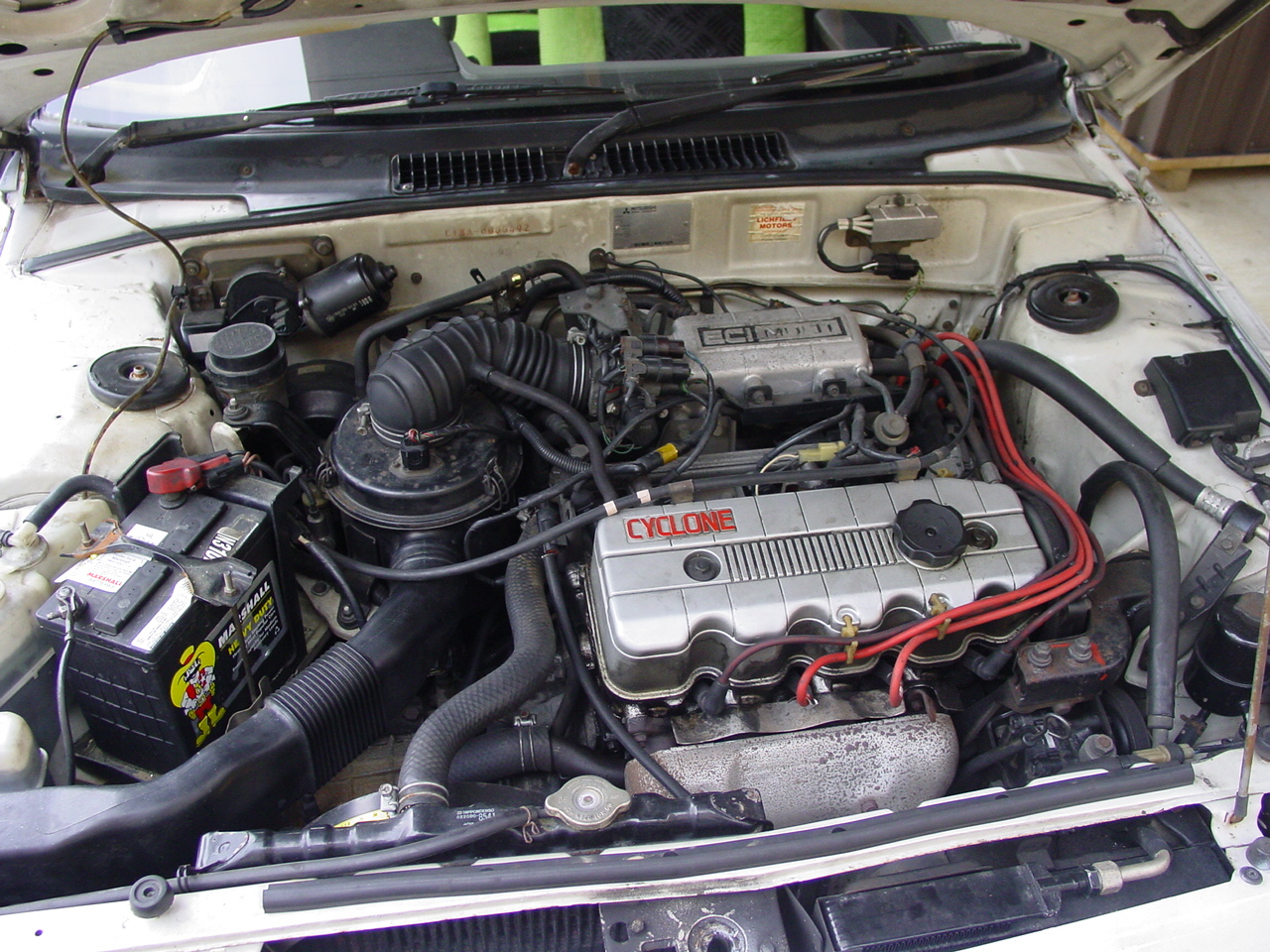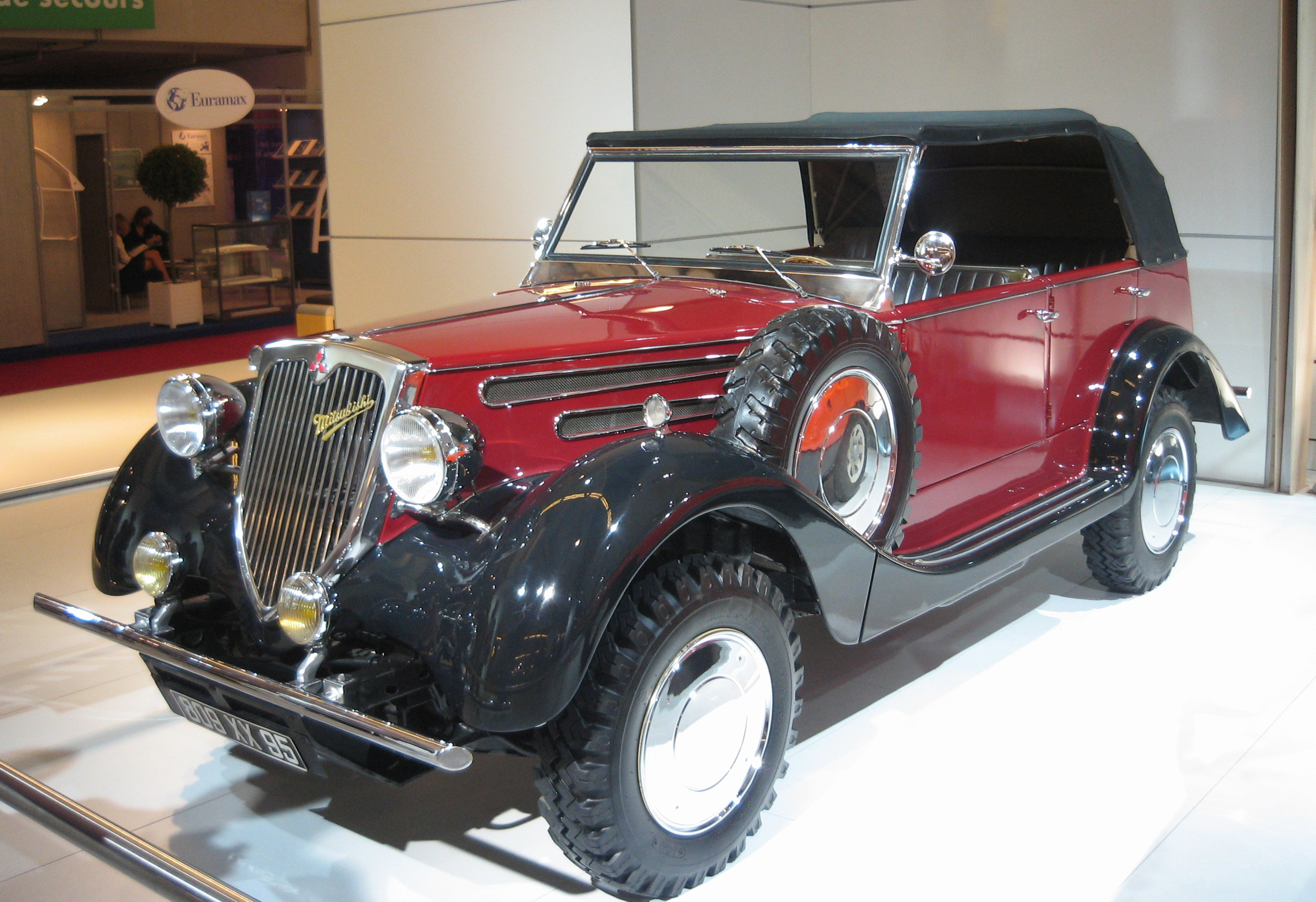|
Hyundai Pony
The Hyundai Pony (Hangul: 현대 포니), is a small rear wheel drive automobile produced by the South Korean manufacturer Hyundai from 1975 until 1990. The Pony was South Korea's first mass-produced and exported car. The Pony nameplate remained in use until 2000 on some export versions of the Hyundai Excel and Accent. Background Hyundai had already ventured into car production by producing locally built versions of the Ford Cortina under licence from 1968. When the company wanted to develop their own car, they hired George Turnbull, the former managing director of Austin Morris at British Leyland in 1974. He in turn hired five other top British car engineers, Kenneth Barnett as body designer, engineers John Simpson and Edward Chapman, John Crosthwaite as chassis engineer and Peter Slater as chief development engineer. With Turnbull's experience with the Morris Marina, engines and transmissions from Mitsubishi, some parts from the Ford Cortina they were already producing, ... [...More Info...] [...Related Items...] OR: [Wikipedia] [Google] [Baidu] |
Hyundai Motor Company
Hyundai Motor Company, often abbreviated to Hyundai Motors ( ) and commonly known as Hyundai (, ; ), is a South Korean multinational automotive manufacturer headquartered in Seoul, South Korea, and founded in 1967. Currently, the company owns 33.88 percent of Kia Corporation, and also fully owns two marques including its luxury cars subsidiary, Genesis Motor, and an electric vehicle sub-brand, Ioniq. Those three brands altogether comprise the Hyundai Motor Group. Hyundai operates the world's largest integrated automobile manufacturing facility in Ulsan, South Korea which has an annual production capacity of 1.6 million units. The company employs about 75,000 people worldwide. Hyundai vehicles are sold in 193 countries through 5,000 dealerships and showrooms. History Chung Ju-Yung (1915–2001) founded the Hyundai Engineering and Construction Company in 1947. Hyundai Motor Company was later established in 1967, and the company's first model, the Cortina, was re ... [...More Info...] [...Related Items...] OR: [Wikipedia] [Google] [Baidu] |
Morris Motors
Morris Motors Limited was a British privately owned motor vehicle manufacturing company formed in 1919 to take over the assets of William Morris, 1st Viscount Nuffield, William Morris's WRM Motors Limited and continue production of the same vehicles. By 1926 its production represented 42 per cent of British car manufacture—a remarkable expansion rate attributed to William Morris's practice of buying in major as well as minor components and assembling them in his own factory. Self-financing through his enormous profits Morris did borrow some money from the public in 1926 and later shared some of Morris Motors' ownership with the public in 1936 when the new capital was used by Morris Motors to buy many of his other privately held businesses. Though it merged... although nearly twenty-five years had elapsed since the BMC merger, not even Austin and Morris, the two volume car manufacturers that formed the core of the original merger, had integrated to a significant degree. Stokes ... [...More Info...] [...Related Items...] OR: [Wikipedia] [Google] [Baidu] |
Manual Transmission
A manual transmission (MT), also known as manual gearbox, standard transmission (in Canada, the United Kingdom, and the United States), or stick shift (in the United States), is a multi-speed motor vehicle transmission (mechanics), transmission system, where gear changes require the driver to manually select the gears by operating a gear stick and clutch (which is usually a foot pedal for cars or a hand lever for motorcycles). Early automobiles used ''sliding-mesh'' manual transmissions with up to three forward gear ratios. Since the 1950s, ''constant-mesh'' manual transmissions have become increasingly commonplace and the number of forward ratios has increased to 5-speed and 6-speed manual transmissions for current vehicles. The alternative to a manual transmission is an automatic transmission; common types of automatic transmissions are the Automatic transmission#Hydraulic automatic transmissions, hydraulic automatic transmission (AT), and the continuously variable transmissio ... [...More Info...] [...Related Items...] OR: [Wikipedia] [Google] [Baidu] |
Straight-four Engine
A straight-four engine (also called an inline-four) is a four-cylinder piston engine where cylinders are arranged in a line along a common crankshaft. The vast majority of automotive four-cylinder engines use a straight-four layout (with the exceptions of the flat-four engines produced by Subaru and Porsche) and the layout is also very common in motorcycles and other machinery. Therefore the term "four-cylinder engine" is usually synonymous with straight-four engines. When a straight-four engine is installed at an inclined angle (instead of with the cylinders oriented vertically), it is sometimes called a slant-four. Between 2005 and 2008, the proportion of new vehicles sold in the United States with four-cylinder engines rose from 30% to 47%. By the 2020 model year, the share for light-duty vehicles had risen to 59%. Design A four-stroke straight-four engine always has a cylinder on its power stroke, unlike engines with fewer cylinders where there is no power stroke occu ... [...More Info...] [...Related Items...] OR: [Wikipedia] [Google] [Baidu] |
Mitsubishi Saturn Engine
The Mitsubishi Saturn or 4G3 engine is series of overhead camshaft (OHC) straight-four internal combustion engines introduced by Mitsubishi Motors and saw first service in the 1969 Colt Galant. Displacement ranges from , although there was also a rare inline-six version built from 1970 until 1976. The early versions have chain driven valvetrain while the later versions are belt driven and equipped with balance shafts. 4G30 The 4G30 displaces . It is an 8-valve SOHC design with an aluminium head and iron block. The engine has five main bearings. Power was . Bore x Stroke: Applications * 1969.12-1971.09 Mitsubishi Galant A I (A51) 4G31 The 4G31 displaces . It is an 8-valve SOHC design with an aluminium head and iron block. The engine has five main bearings. Power was depending on which carburetor combo was used. An updated version with central-point electronic fuel injection was installed in Mirages and Lancers from 1986 on. A version for industrial use has at 3000 ... [...More Info...] [...Related Items...] OR: [Wikipedia] [Google] [Baidu] |
Station Wagon
A station wagon ( US, also wagon) or estate car ( UK, also estate), is an automotive body-style variant of a sedan/saloon with its roof extended rearward over a shared passenger/cargo volume with access at the back via a third or fifth door (the liftgate or tailgate), instead of a trunk/boot lid. The body style transforms a standard three-box design into a two-box design — to include an A, B, and C-pillar, as well as a D-pillar. Station wagons can flexibly reconfigure their interior volume via fold-down rear seats to prioritize either passenger or cargo volume. The '' American Heritage Dictionary'' defines a station wagon as "an automobile with one or more rows of folding or removable seats behind the driver and no luggage compartment but an area behind the seats into which suitcases, parcels, etc., can be loaded through a tailgate." When a model range includes multiple body styles, such as sedan, hatchback, and station wagon, the models typically share their platfor ... [...More Info...] [...Related Items...] OR: [Wikipedia] [Google] [Baidu] |
Sedan (car)
A sedan or saloon (British English) is a passenger car in a three-box configuration with separate compartments for an engine, passengers, and cargo. The first recorded use of the word "sedan" in reference to an automobile body occurred in 1912. The name derives from the 17th-century litter known as a sedan chair, a one-person enclosed box with windows and carried by porters. Variations of the sedan style include the close-coupled sedan, club sedan, convertible sedan, fastback sedan, hardtop sedan, notchback sedan, and sedanet/sedanette. Definition A sedan () is a car with a closed body (i.e. a fixed metal roof) with the engine, passengers, and cargo in separate compartments. This broad definition does not differentiate sedans from various other car body styles, but in practice, the typical characteristics of sedans are: * a B-pillar (between the front and rear windows) that supports the roof * two rows of seats * a three-box design with the engine at the front and the c ... [...More Info...] [...Related Items...] OR: [Wikipedia] [Google] [Baidu] |
Liftback
A liftback is a variation of hatchback with a sloping roofline between 45 and 5 degrees. Traditional hatchback designs usually have a 90 to 46 degree slope on the tailgate or rear door. As such the liftback is essentially a hatchback with a more sloping roof, similar to sedans/saloons from a styling perspective. Some liftbacks may also have an appearance similar to a coupe but with a tailgate hinged at the roof that is lifted to open. The liftback design combines the versatility of a regular hatchback and aerodynamics of a sedan. Liftbacks often offer more boot space over the regular hatchback and sedan but not the station wagon/estate variant of the same model. __TOC__ History In 1973, Toyota invented the "liftback" term to describe the sloping roofline variation of the Celica with a tailgate hinged at the roof, as opposed to the regular hardtop coupe variation which was introduced three years earlier. As its roofline slope is uninterrupted, it can also be defined as a f ... [...More Info...] [...Related Items...] OR: [Wikipedia] [Google] [Baidu] |
Coupe Utility
A coupe or coupé (, ) is a passenger car with a sloping or truncated rear roofline and two doors. The term ''coupé'' was first applied to horse-drawn carriages for two passengers without rear-facing seats. It comes from the French past participle of ''couper'', "cut". __TOC__ Etymology and pronunciation () is based on the past participle of the French verb ("to cut") and thus indicates a car which has been "cut" or made shorter than standard. It was first applied to horse-drawn carriages for two passengers without rear-facing seats. These or ("clipped carriages") were eventually clipped to .. There are two common pronunciations in English: * () – the anglicized version of the French pronunciation of ''coupé''. * () – as a spelling pronunciation when the word is written without an accent. This is the usual pronunciation and spelling in the United States, with the pronunciation entering American vernacular no later than 1936 and featuring in the Beach Boys' ... [...More Info...] [...Related Items...] OR: [Wikipedia] [Google] [Baidu] |
Giorgetto Giugiaro
Giorgetto Giugiaro (; born 7 August 1938) is an Italian automotive designer. He has worked on supercars and popular everyday vehicles. He was born in Garessio, Cuneo, Piedmont. Giugiaro was named Car Designer of the Century in 1999 and inducted into the Automotive Hall of Fame in 2002. In addition to cars, Giugiaro designed camera bodies for Nikon, ''Navigation promenade'' of Porto Santo Stefano, in 1983, the organ of the cathedral of Lausanne (composed of about 7000 pipes) in 2003, and developed a new pasta shape, "Marille". He also designed several watch models for Seiko, mainly racing chronographs, as well as office furniture for Okamura Corporation. Influence on design Giugiaro's earliest cars, like the Alfa Romeo 105/115 Series Coupés, often featured tastefully arched and curving shapes, such as the De Tomaso Mangusta, Iso Grifo, and Maserati Ghibli. In the late 1960s, Giugiaro made increasingly angular designs, culminating in the "folded paper" era of ... [...More Info...] [...Related Items...] OR: [Wikipedia] [Google] [Baidu] |
Italdesign Giugiaro
Italdesign Giugiaro S.p.A. is a design and engineering company and brand based in Moncalieri, Italy, that traces its roots to the 1968 foundation of Studi Italiani Realizzazione Prototipi S.p.A. by Giorgetto Giugiaro and Aldo Mantovani. Best known for its automobile design work, Italdesign also offers product design, project management, styling, packaging, engineering, modeling, prototyping and testing services to manufacturers worldwide. As of 2010, Italdesign employs 800 people. On August 9, 2010, Volkswagen Group subsidiary Audi's subsidiary Lamborghini acquired 90.1% of the shares of Italdesign Giugiaro S.p.A., including the brand name rights and patents. The remaining shares were sold to Audi on 28 June 2015, with Giorgetto Giugiaro resigning from the firm at the same time. History Foundation Giorgetto Giugiaro and Aldo Mantovani founded Studi Italiani Realizzazione Prototipi S.p.A., the company that would eventually become Italdesign, on February 13, 1968, in Moncalieri, ... [...More Info...] [...Related Items...] OR: [Wikipedia] [Google] [Baidu] |
Mitsubishi Motors
is a Japanese multinational automobile manufacturer headquartered in Minato, Tokyo, Japan.Corporate Profile , Mitsubishi Motors website, 19 June 2008 In 2011, Mitsubishi Motors was the sixth-largest Japanese automaker and the 19th-largest worldwide by production. Since October 2016, Mitsubishi has been one-third (34%) owned by Nissan, thus a part of the Renault–Nissan–Mitsubishi Alliance. Besides being part of the Renault–Nissan–Mitsubishi Alliance, it is also a part of [...More Info...] [...Related Items...] OR: [Wikipedia] [Google] [Baidu] |

.jpg)









